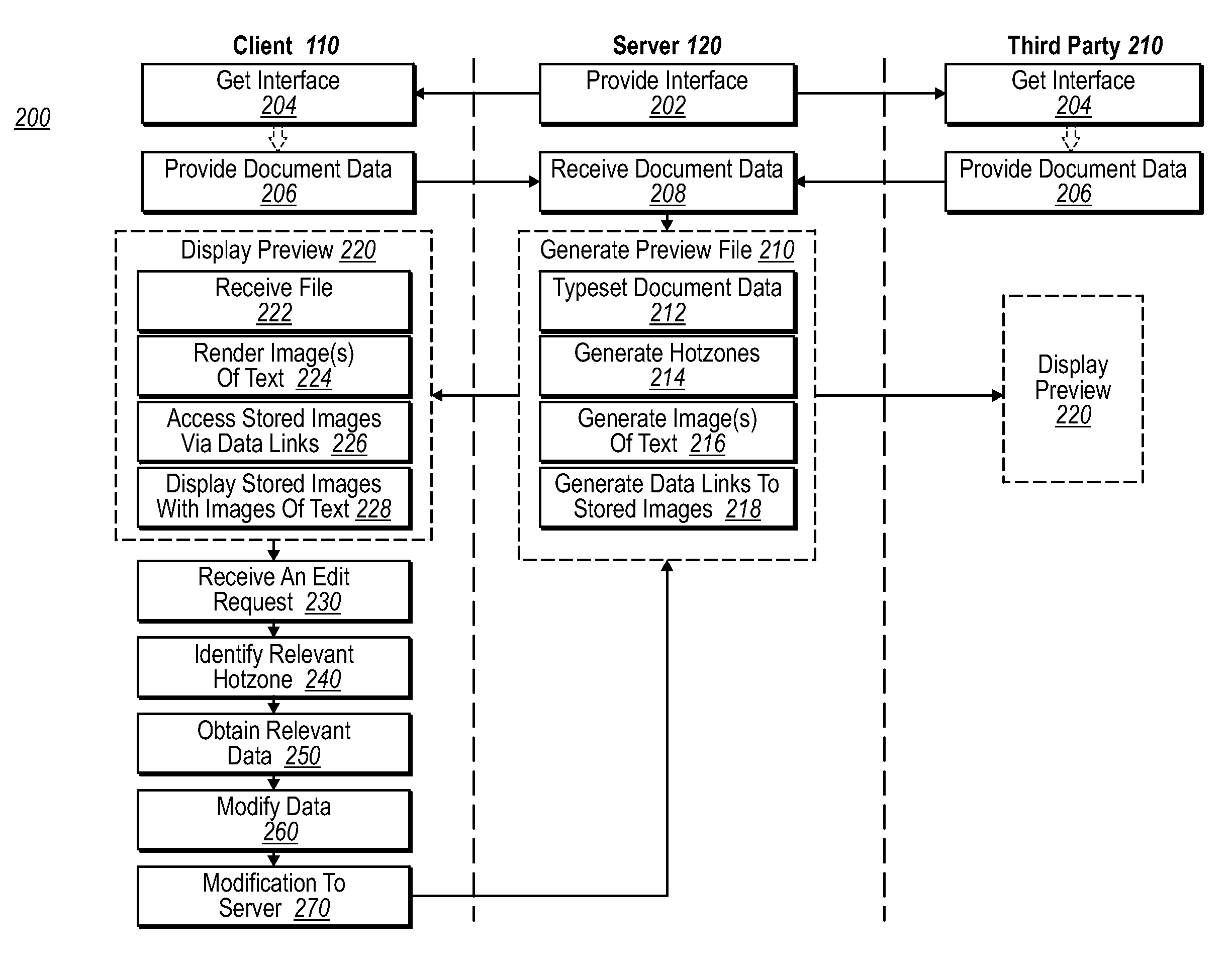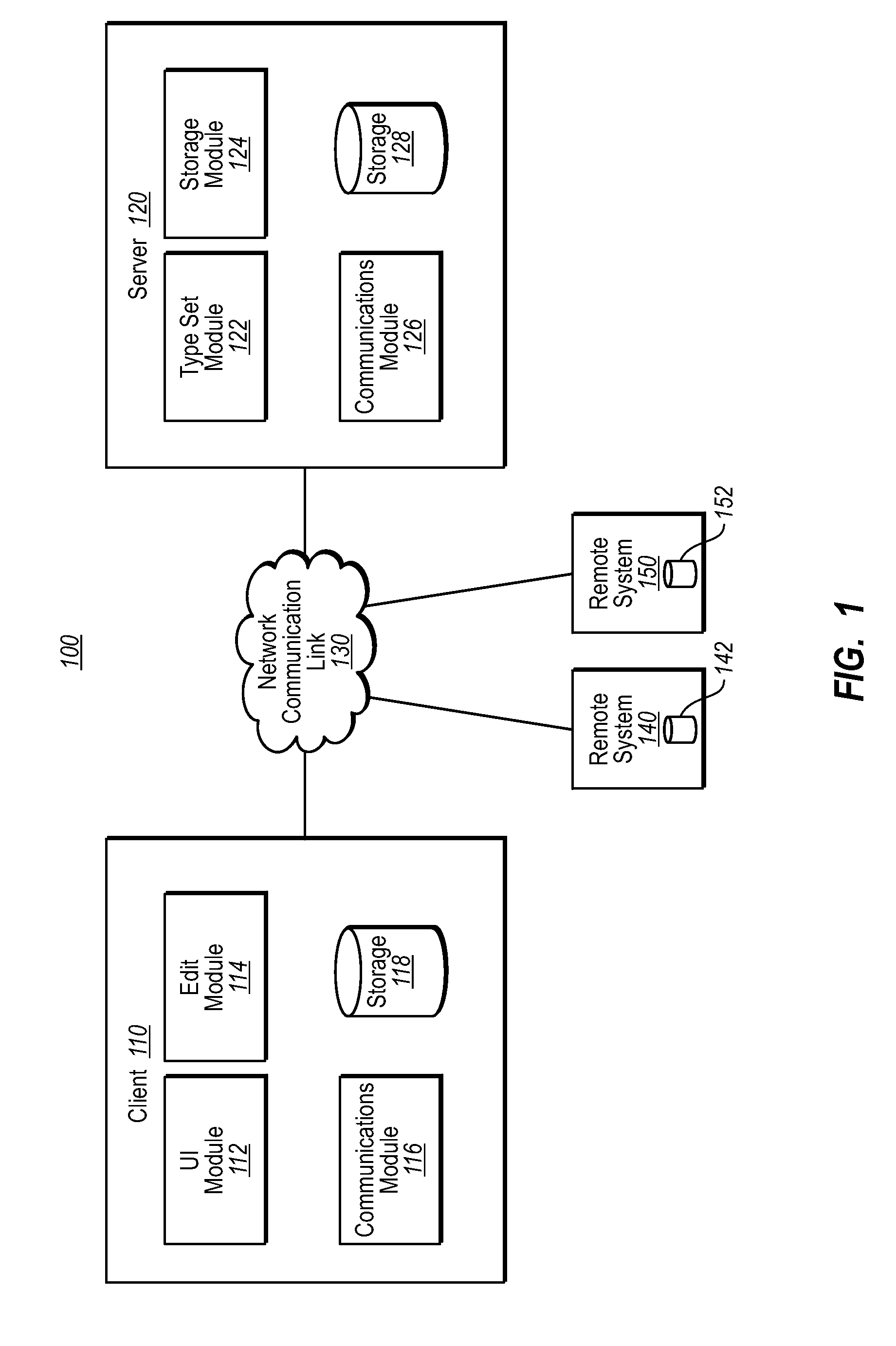Online publishing tools
a technology of online publishing and tools, applied in the field of online and browser-based publishing, can solve the problems of preventing individual consumers and small entities from publishing their own works, prohibitive complexities and costs associated with publishing, and relatively expensive to professionally publish individual and small quantities of work, so as to reduce any latency experienced by clients, the processing of transmission and loading process can be sped up
- Summary
- Abstract
- Description
- Claims
- Application Information
AI Technical Summary
Benefits of technology
Problems solved by technology
Method used
Image
Examples
Embodiment Construction
[0038]The present invention extends to methods, interfaces, computer program products and computing systems, all of which are referred to as tools, for facilitating Online or browser-based publishing.
[0039]In some embodiments, a client system uses publishing services available through the Internet to submit and modify content for publication. The interfaces available to the client system include a preview interface for previewing an accurate representation of how the content is formatted by the publishing application or service. The content is rendered through the preview interface with proper proportional placement with regard to the other content, and as dictated by positioning information included in the corresponding preview file.
[0040]In some embodiments, the preview file that is sent to the client corresponds to less than the entire contents of the client document being worked on. Images and other content can be omitted and referenced by links to the content. The client system...
PUM
 Login to View More
Login to View More Abstract
Description
Claims
Application Information
 Login to View More
Login to View More - R&D
- Intellectual Property
- Life Sciences
- Materials
- Tech Scout
- Unparalleled Data Quality
- Higher Quality Content
- 60% Fewer Hallucinations
Browse by: Latest US Patents, China's latest patents, Technical Efficacy Thesaurus, Application Domain, Technology Topic, Popular Technical Reports.
© 2025 PatSnap. All rights reserved.Legal|Privacy policy|Modern Slavery Act Transparency Statement|Sitemap|About US| Contact US: help@patsnap.com



